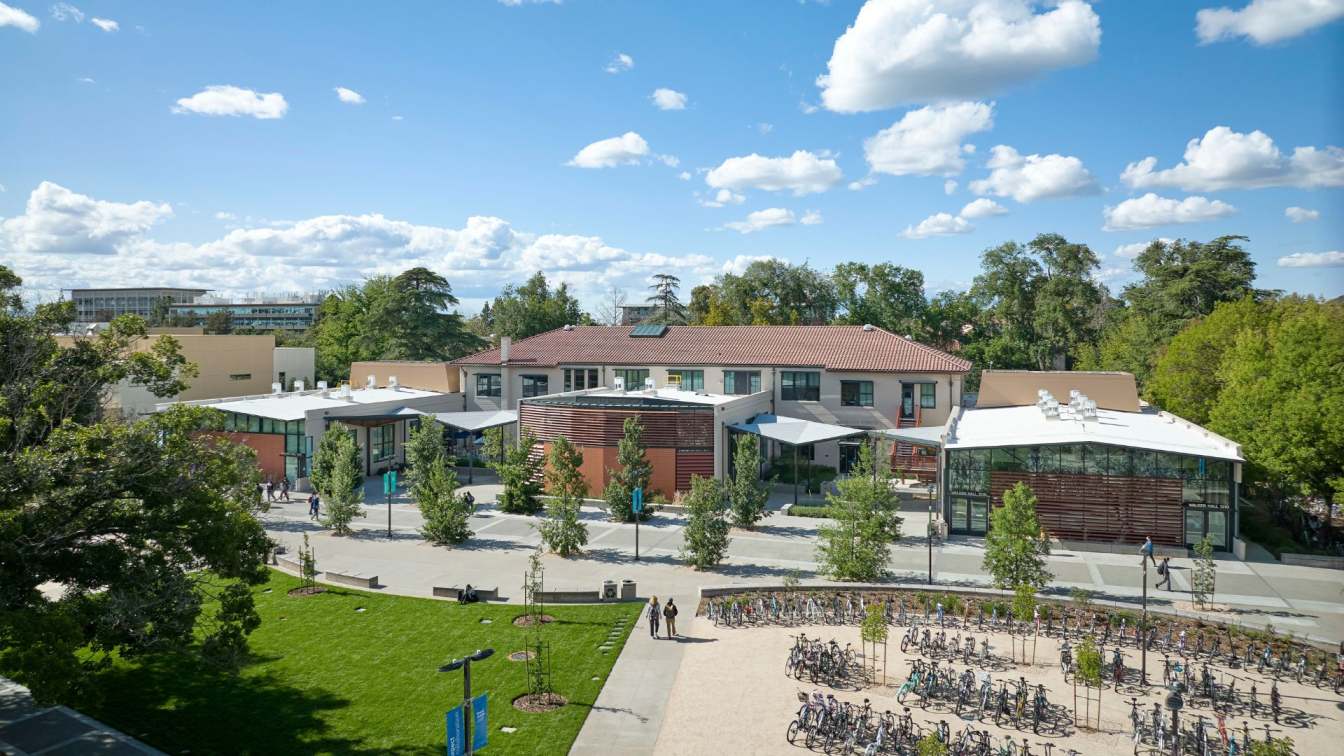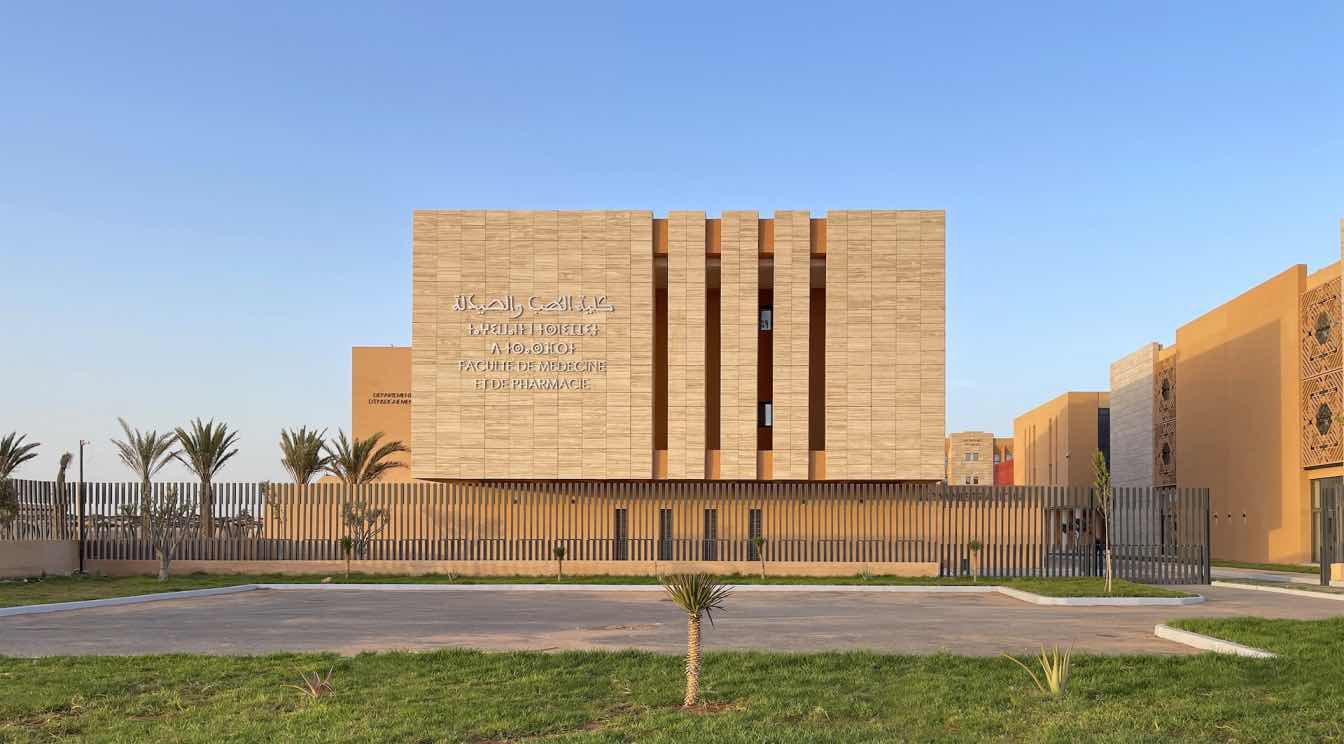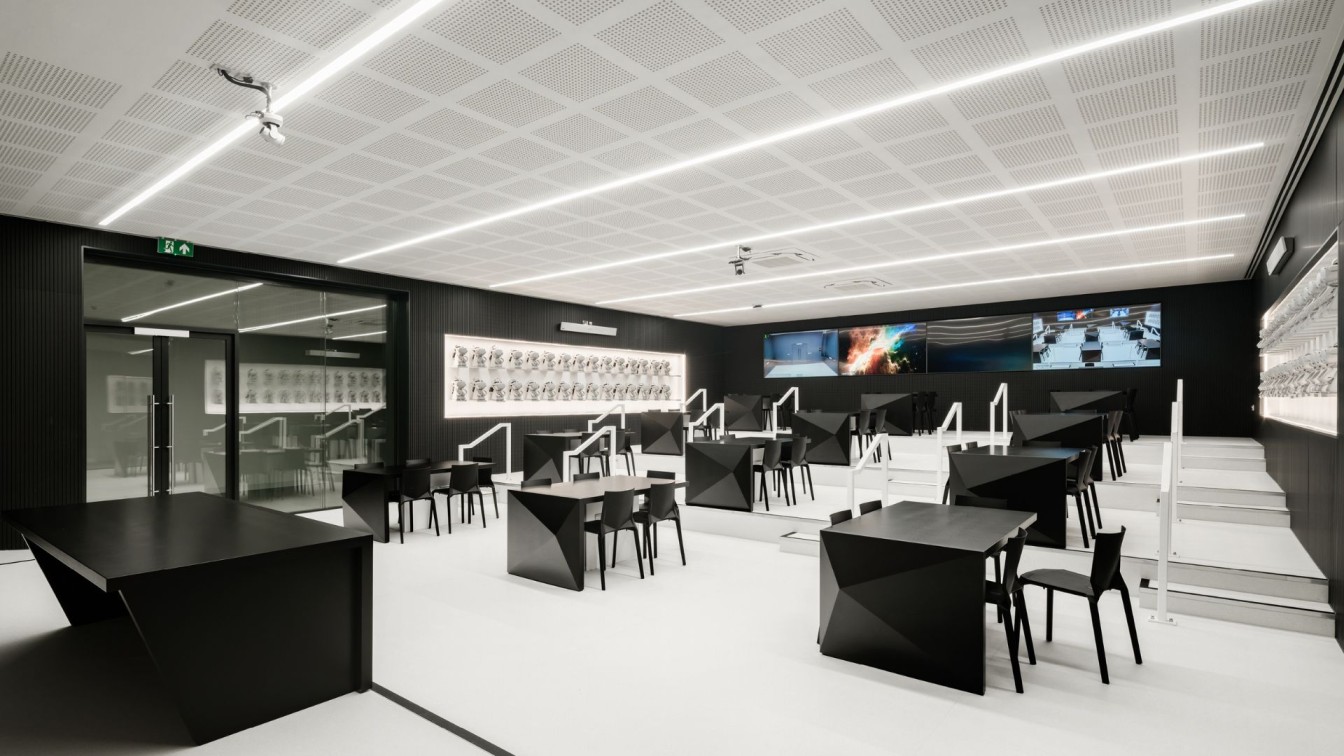HabitArt Architecture Studio: The National School of Business is a higher education institution offering both graduate and post-graduate courses in business management. Driven by a collaboration-focused, holistic pedagogy, NSB has cemented itself as one of Bangalore’s reputed business schools.
In response to their rapid growth, the institution conceived of a new center of academia adjacent to its existing campus. Working with the institution’s board of directors, we developed a vision for this new block: a unique, landmark form that would refresh the institution’s identity and exemplify their community-centric ethos, all while fulfilling the heavy programmatic requirements.
The nature of the project posed a number of key challenges:
The first challenge was tight deadlines. To have a functional set up as soon as possible, the overall project timeline was one academic year, the design phase being given just 10 days. We therefore aimed towards a simple, but flexible, layout that could be transformed and augmented over the course of the project.
The second challenge was in working with restricted buildable area arising from the site’s location next to a railway line. In addition to the basic peripheral 6m setback, a mandated 30m setback from the railway line decided the buildable area on the 33,500sft site and delineated the profile of the layout. Additionally, the limited FAR allowance necessitated a creative take on the layout to satisfy programmatic requirements while adhering to local bye-laws.
This issue was resolved by simply splitting the layout into two wings, academic and faculty, and running an outdoor spine down the middle. The central spine serves as spill-out area for the two wings and forms the primary path of movement, minimizing the need for built circulation and thus its FAR consumption.
To the east, the spine opens out to the existing block, creating a pedestrian transition between the two blocks. To the west, the spine opens out to a swatch of land on which trees are being allowed to proliferate and become a green barrier between the railway line and the campus.
The spine is cut by a large entry plinth connecting the two wings. Lined with local Sadarahalli stone, it functions as a formal welcome to the block. The plinth is sheltered by a metal bridge connecting the upper floors of the two wings. Both these spaces form defined, outdoor interaction spaces and promote a sense of community. The final challenge was to address the programmatic requirements posed by the education board.
The academic block is anchored on either end by raked, lecture halls. Smaller tutorial rooms and circulation core fill in the center. The layout remains typical across floors. However, upper floor classrooms are designed with flat floors allowing the rooms to be adapted to different functions and furniture configurations.
The faculty block houses 40 independent staff rooms over two floors to accommodate their research and focused work. The Director’s cabin and conference rooms are placed on the ground floor for easy access.
All spaces are designed to capture maximum, indirect daylight, and ventilation, avoiding artificial lighting and air-conditioning during most part of the day. Both blocks are also wrapped in wire-cut brick sourced from the nearby region of Malur. Combined with strategic fenestration placement, this insulating second skin further optimizes passive cooling and thermal comfort internally.
Bricks are intermittently projected along the façade, creating a play in shadow through the day, and adding dimension to the otherwise simple elevation. The brick skin allows the building to stand out in the surrounding landscape without being a harsh contrast to the greenery. A second floor is planned for the future, along with a space frame structure to shelter the entrance of the block.

































